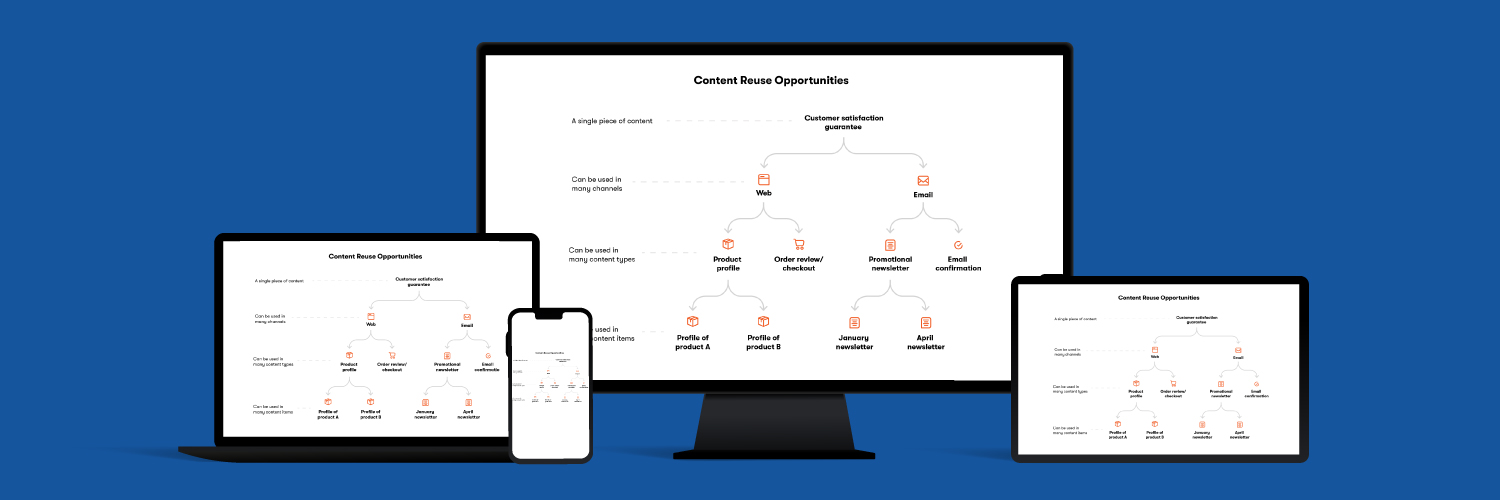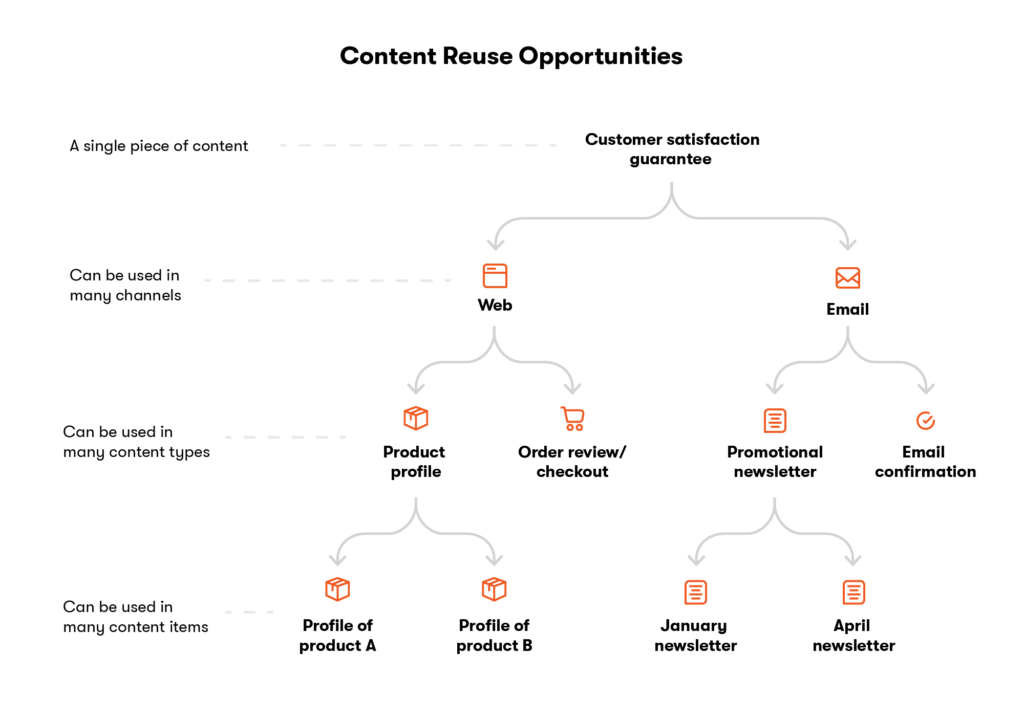
Content management is undergoing a once-in-a-generation transformation. Online publishers are moving away from the website-centric CMSs that have dominated during the past two decades. Instead, they are adopting a new approach known as headless or API-first content management. In the recent words of an Accenture analysis, headless is “becoming the new normal.”
Headless CMSs enable organizations to energize their bloated, sluggish websites. They can refresh their UI designs quickly and deliver faster-loading pages. A headless CMS can unleash a better user experience. It also allows the technical infrastructure of an enterprise to be more agile. But how does headless content management benefit authors?
For years, content strategists have advocated for the ideal of “create once, publish everywhere” (COPE). But web content management systems weren’t designed to support the COPE approach. Now, with the wide availability of headless CMSs, COPE is finally possible. Content professionals are becoming more interested in headless CMSs, though this approach to content management is still new and not yet familiar to many.
Introducing New Practices For More Impact
Headless CMSs introduce a new approach to creating content. Authors don’t create individual web pages. Instead, they create multipurpose content that’s not tied to how and where it is presented. The same content can be delivered to many different devices and platforms and customized in numerous ways.
A headless CMS is different from a traditional web CMS in three key aspects:
- A “content-first” focus
- Editorial flexibility to customize content
- The ability to reuse content easily
A “Content-first” Focus
The content in a headless CMS is separate from the designs that display the content. Because the content is not dependent on the design, authors can plan their content first. They start by deciding what information they need to convey and then choose the best places and formats to present and promote that content. Authors can concentrate on the messages they want to deliver without waiting on designers to decide the layout. They can develop their content according to an agreed upon structure, confident that any future designs will be able to work with what they’ve created. They won’t have to rewrite the content if the design changes.
Editorial Flexibility to Customize Content
Headless CMSs give authors editorial flexibility to create custom versions of content and decide how to express information most effectively in different channels. Content customization can shorten the user journey, reducing clicks and improving outcomes.
A headless CMS can add structure to the content to make it more flexible. Instead of massive, long documents, the content is modular. Content teams can choose how much detail to present to readers at different times. They can change the mix of details presented to provide personalization. Structuring the content allows authors and editors to:
- Modify different parts to assemble distinct combinations
- Show a short or long version of the content, depending on the context
- Write, edit, and review specific sections of larger items without interfering with or holding up colleagues
- Update only those parts that need it without having to revise everything using that content
This flexibility supports greater content personalization than was previously possible. Content teams can tailor all kinds of content to specific audience needs.
They can also tailor content for specific channels. They can create and select pieces of content to appear on various websites, in mobile apps, or within email communications. Headless CMSs also support newer channels such as voice bots, chatbots, augmented reality, wearables, and embedded screens in cars and appliances.
The Ability to Reuse Content Easily
When content is modular and multipurpose, it becomes a shared, reusable resource. Anyone who needs to can reuse or update existing content. The value of content assets to the organization grows each time they get reused.
Expanding Your Perspective On Content Creation
The process that organizations use to create content has a big influence on the value they will realize from that content. By itself, a headless CMS won’t automatically change how content teams do their work. If you want your content to be more flexible and useful, you’ll need to start thinking about content differently.
A headless CMS can streamline and mature your content operations, provided authors are willing to embrace new routines. Challenge yourself to:
- Think even more deeply about user needs. Don’t limit yourself to writing for the “average” user. Take advantage of personalization. Because the content is structured, you can customize individual sections easily. You can provide specific messages and information for distinct audience segments. Think about what unique information or messages would be especially useful to different kinds of users.
- Adopt a collaborative mindset. The content you create will be a shared resource. You personally won’t write everything the audience sees. But the reach and potential impact of what you create will be far broader. For example, you might write up a compelling customer testimonial that’s used within many content items that your colleagues create.
Using Tools More Effectively
To transition successfully to this new approach, your team will want to choose the right tool. Headless CMS software can vary in the features they provide for authors. When it comes to selecting a headless CMS, content authors should:
- Make sure the authoring interface supports multi-person collaboration when revising text.
- Look for an authoring interface that provides the ability to preview and edit content in context.
- Be aware that some older web CMSs have added limited headless capabilities to support non-web channels, but these “hybrid” products don’t provide the editorial flexibility that comes with purpose-built headless CMS.
If you’d like to learn more about working with a headless CMS, register for Kontent’s free 2-hour e-learning course, Headless CMS 101, which provides a non-technical introduction to the core concepts.
Events, Resources, + More
The Ultimate Guide to End-to-End Content
Discover why + how an end-to-end approach is critical in the age of AI with this comprehensive white paper.
The Content Advantage Book
The much-anticipated third edition of the highly rated book by Colleen Jones is available at book retailers worldwide. Learn more!
20 Signs of a Content Problem in a High-Stakes Initiative
Use this white paper to diagnose the problem so you can achieve the right solution faster.
Upskill with Content Science Academy
Training for modern content roles through on-demand certifications + courses or live workshops.







Comments
We invite you to share your perspective in a constructive way. To comment, please sign in or register. Our moderating team will review all comments and may edit them for clarity. Our team also may delete comments that are off-topic or disrespectful. All postings become the property of
Content Science Review.